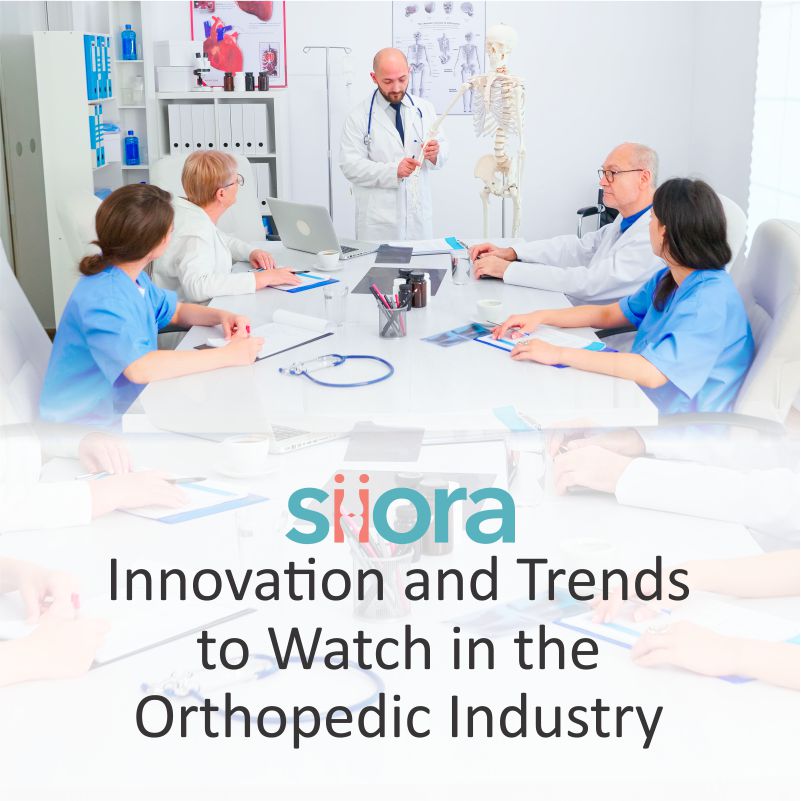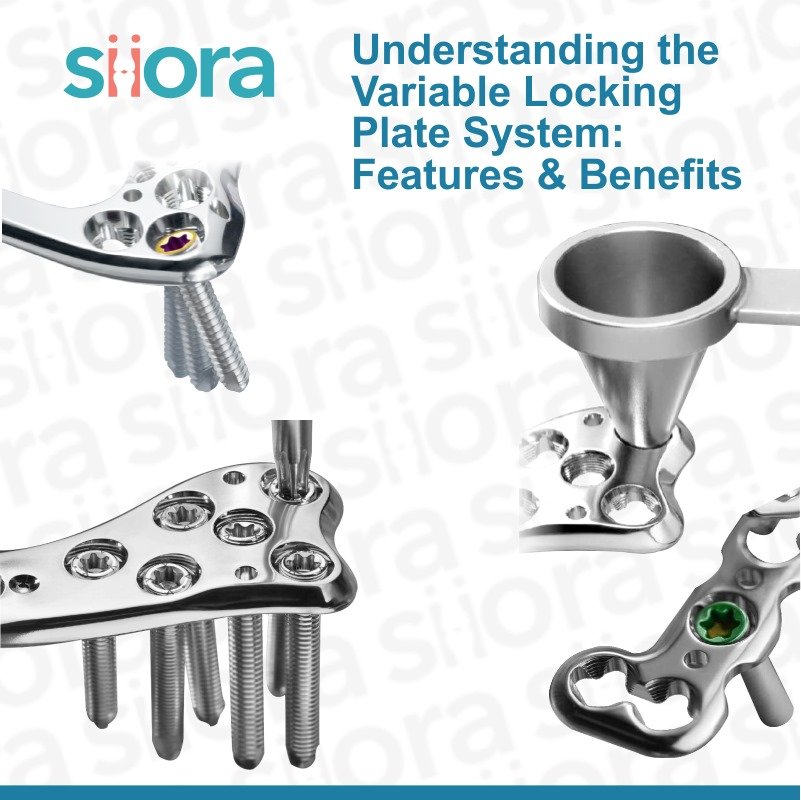The world of orthopedics is constantly evolving. Newer technologies are entering the market and there is continuous research going on. This promises to revolutionize the way we diagnose, treat, and rehabilitate musculoskeletal conditions. These advancements hold the potential to improve patient outcomes, reduce recovery times, and personalize care to an unprecedented degree. This blog will highlight some of the key trends and advancements in the orthopedics sector.
Innovation and Advancements in Orthopedics Industry
Robotics and Computer-Assisted Surgery (CAS)
Robotic arms and sophisticated navigation systems are being tried in orthopedic surgery. These technologies offer surgeons greater precision, control, and minimally invasive approaches. Robotic systems can assist surgeons with various tasks including bone drilling, joint replacement, and complex fracture repair. This minimizes human error. On the other hand, computer-assisted surgery (CAS) utilizes real-time imaging and computer guidance to ensure the accuracy of implant placement and surgical procedures. This contributes to faster recovery times, less pain for patients, and potentially fewer complications.
3D Printing and Customized Implants
3D printing technology is customizing implants exactly as per the patient’s requirement. By creating patient-specific implants using CT scans and MRI data, surgeons can achieve a perfect fit for knees, hips, and other joints. This can certainly improve implant stability, function, and longevity. Thus, minimizing the need for revision surgery. Additionally, 3D printing allows for the creation of complex surgical instruments tailored to specific procedures, further enhancing surgical precision and efficiency. These technologies will be one of the key factors in the advancements in orthopedics industry.
Regenerative Medicine and Tissue Engineering
This field focuses on repairing or replacing damaged tissues with the body’s own cells or bioengineered tissues. Techniques like stem cell therapy and bioprinting offer the potential to regenerate cartilage, bone, and even entire joints. Imagine a future where damaged cartilage in your knee can be repaired with your own stem cells. This will eliminate the need for joint replacement. However, the technology is still in its early stages. It holds immense promise for treating a wide range of orthopedic conditions and promoting long-term healing.
Augmented Reality (AR) and Virtual Reality (VR)
These immersive technologies are finding new applications in orthopedic medicine. Augmented reality (AR) allows orthopedic surgeons to visualize critical anatomical structures that are difficult to visualize during surgeries. This can significantly improve surgical accuracy, especially in complex procedures. On the other hand, virtual reality (VR) is being used for surgical planning and training. Surgeons can practice procedures in a virtual environment to enhance their skills before operating on real patients. These advancements in orthopedics will be critical in improved surgical outcomes and better patient care.
Wearable Technology and Remote Monitoring
Wearable devices like smartwatches and activity trackers are becoming increasingly sophisticated in the medical industry. They offer valuable insights into a patient’s recovery progress. These devices can track the range of motion, gait analysis, and even pain intensity, providing real-time data to physicians. This helps them tailor rehabilitation programs. By utilizing telehealth consultations and wearable data analysis, doctors can monitor patients’ progress remotely, identify potential issues early on, and provide necessary treatments at the right time.
Recent Trends in Orthopedic Surgery
The field of orthopedic surgery is constantly evolving, aiming to improve patient outcomes, minimize recovery times, and enhance overall well-being. Here’s a glimpse into some exciting trends revolutionizing the way we approach bone, muscle, and joint conditions:
Minimally Invasive Surgery and Robotics
Gone are the days of large incisions. Minimally invasive surgery (MIS) is now a gold standard, using smaller cuts and advanced tools to access surgical sites. This translates to less tissue disruption, reduced pain, faster healing, and shorter hospital stays. Robotics is taking MIS a step further. Robotic-assisted surgery utilizes computer-controlled robotic arms to assist surgeons with exceptional precision and accuracy. This translates to improved implant placement, potentially leading to longer-lasting joint replacements and better functional outcomes.
Precision Medicine and Personalized Implants
The concept of “one-size-fits-all” is fading in orthopedics. Personalized medicine takes center stage, with customized treatment plans based on individual patient factors like anatomy, injury severity, and activity level. This often involves 3D printing technology. Surgeons can create patient-specific implants using 3D models derived from CT scans or MRIs. These custom-made implants offer a perfect fit, potentially leading to improved joint stability and function.
The Rise of Regenerative Medicine
This exciting field focuses on promoting the body’s natural healing abilities. Techniques like stem cell therapy and platelet-rich plasma (PRP) injections are being explored to stimulate tissue repair and regeneration. While still in its early stages, regenerative medicine holds immense promise for treating conditions like osteoarthritis and promoting bone healing after fractures.
Digital Technologies and Telemedicine
The digital revolution is transforming orthopedics. Advanced imaging techniques like EOS low-radiation X-rays provide detailed 3D images, aiding in preoperative planning and surgical decision-making. Additionally, telemedicine allows for virtual consultations, remote monitoring of postoperative progress, and personalized rehabilitation guidance. This improves accessibility to care, particularly for patients in remote locations.
Smart Implants and Wearable Devices
The future of orthopedics might involve “smart” implants embedded with sensors. These implants can collect valuable data on joint mechanics, implant performance, and even potential signs of infection. Wearable devices are also playing a role. Sensors in braces or activity trackers can monitor patient progress during rehabilitation, allowing for real-time adjustments and improved recovery outcomes.
Focus on Ambulatory Surgical Centers
As surgeries become less invasive, the trend is shifting towards ambulatory surgical centers (ASCs). These outpatient facilities offer a more comfortable and cost-effective environment for certain procedures compared to traditional hospitals. This allows patients to recover at home sooner, minimizing disruption to their daily lives.
Infection Prevention and Antimicrobial Strategies
Preventing surgical site infections (SSIs) remains a top priority. Orthopedic surgeons are implementing meticulous sterile techniques and utilizing advanced coatings on implants to minimize the risk of infection. Additionally, research is ongoing into developing new antimicrobial materials to further combat SSIs.
These emerging technologies and advancements in orthopedics represent a significant promise for the orthopedic industry. As research and development continue, we can expect even more advancements that will further improve patient care, enhance surgical outcomes, and accelerate recovery times. The future of orthopedics is undoubtedly bright, with personalized medicine and minimally invasive procedures taking center stage. This will lead to a better quality of life for patients with musculoskeletal conditions.
About Siora Surgicals Pvt. Ltd.
Siora Surgicals Pvt. Ltd. is an industry leader in manufacturing and supplying an international standard range of orthopedic implants & instruments. With a strong global presence, Siora has served clients in 50+ countries and continues to look for orthopedic implant distributor in USA and other countries. Having a technologically advanced manufacturing unit, Siora produces a CE-certified range of trauma implants under 20+ categories. The company is known for keeping its inventory updated with the latest orthopedic devices. It is also a reliable OEM service provider in the world. Contact us to become our distributor.








